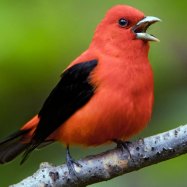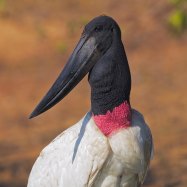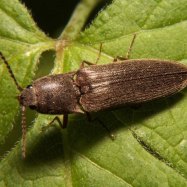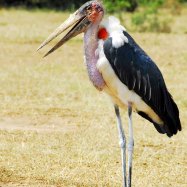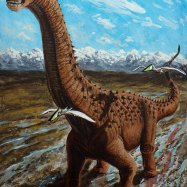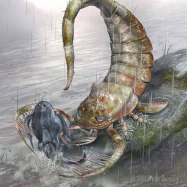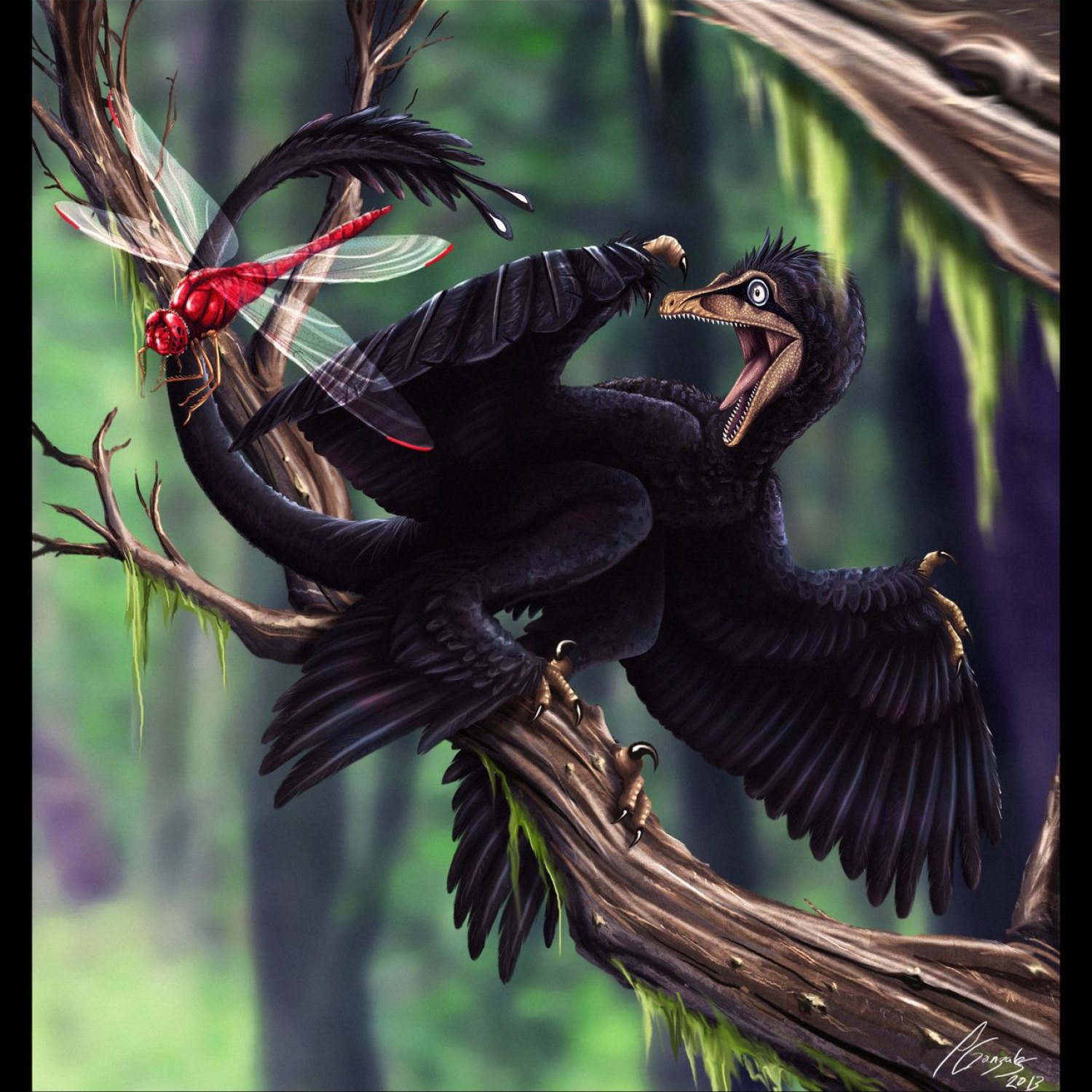
Microraptor
Around 1 meter (3.3 feet)
Meet the Microraptor, a small but fierce bird-like dinosaur that roamed the Liaoning Province in China over 100 million years ago. With a length of around 1 meter and belonging to the family Dromaeosauridae, this agile predator proves that big things can come in small packages. #Microraptor #Dinosaur #Liaoning #China #Fierce #Predator #SmallButMighty
Animal Details Summary:
Common Name: Microraptor
Kingdom: Animalia
Habitat: Forest and wetland environments
The Magnificent Microraptor: A Daring Dinosaur from China
Imagine walking through a lush forest in China millions of years ago, and suddenly a small, bird-like creature swoops down from the trees with its iridescent black plumage glistening in the sun. Its sharp claws and carnivorous appetite make it clear that this creature is not a harmless bird, but rather a fierce dinosaur known as Microraptor.Microraptor, scientifically known as Microraptor zhaoianus, is a unique and intriguing species of dinosaur that lived during the Early Cretaceous period, approximately 120 million years ago. Its name, which means “small thief,” aptly describes its agile and cunning nature Microraptor. Microraptor belongs to the Animalia kingdom, Chordata phylum, Dinosauria class, Saurischia order, and Dromaeosauridae family. Its habitat consisted of forest and wetland environments, making the Liaoning Province in China its ideal location.
What makes this tiny dinosaur stand out is its striking physical features, including its black iridescent plumage, small size, and bird-like body shape. Furthermore, its unique feeding method, geographical distribution, and origins in China are all worth exploring in more detail to truly understand the magnificence of this daring dinosaur.
Feeding Method
Microraptor was a carnivorous hunter, meaning it fed on other animals for survival. Its sharp, curved claws and elongated snout, combined with its deadly agility, made it a skilled predator. It is believed that Microraptor primarily fed on small mammals, lizards, and birds, but it was also capable of taking down larger prey through its surprise attacks.What sets Microraptor apart from other carnivorous dinosaurs is its feeding method. While most dinosaurs attack and kill their prey, Microraptor preferred a more cunning approach Maiasaura. This small dinosaur was known for its stealthy and acrobatic hunting techniques, jumping from trees and gliding through the forest while snatching its unsuspecting prey with its sharp claws. Its bird-like feathers also allowed it to maneuver and land gracefully, making it a formidable predator.
Researchers believe that the Microraptor’s unique feeding method indicates its intelligent and strategic approach to hunting. It was not just a mindless killer, but rather a calculated hunter that relied on surprise and precision to catch its next meal.
Geographical Distribution and Country of Origin
Microraptor’s geographical distribution was limited to China, specifically in the Liaoning Province. This area is rich in fossils, making it the perfect location for paleontologists to discover and study this remarkable dinosaur.The Liaoning Province, located in northeastern China, is known for its diverse landscape and rich history. It is home to many ancient species, including Microraptor, which adds to the province’s significance in understanding our planet's past. Moreover, Microraptor’s presence in China sheds light on the country’s natural history and contributions to the world of paleontology.
Furthermore, studies have shown that Microraptor’s small size and ability to glide may have evolved due to the dense forests in the Liaoning Province. This adaptation allowed it to move swiftly and silently through the dense foliage, making it a successful predator.
Physical Characteristics
Microraptor’s striking physical features are what makes it stand out among other dinosaurs. It had a black, iridescent plumage that shone in the sunlight, giving it a distinct appearance. This feature is particularly fascinating as it is one of the earliest instances of iridescent feathers in animals, indicating that Microraptor’s feathers may have played a role in attracting mates or deterring predators.In terms of size, Microraptor was relatively small compared to other dinosaurs, measuring at only 1 meter (3.3 feet) in length and weighing up to 1 kilogram (2.2 pounds). Its small size and lightweight body allowed it to move quickly and effortlessly through the air and on land.
One of the most notable physical characteristics of Microraptor is its bird-like body shape. Its long and slender tail, feathered wings, and sharp claws are all features that are more commonly seen in birds than in dinosaurs. This discovery sheds light on the evolutionary connection between birds and dinosaurs, indicating that Microraptor may have had bird ancestors.
A Window into the Past
Thanks to the well-preserved fossils found in the Liaoning Province, scientists have been able to gather a wealth of information about Microraptor. The detailed structures of its feathers and wings have provided valuable insight into its anatomy and behavior. These findings not only help us understand Microraptor but also offer a glimpse into the life of all dinosaurs and how they evolved over time.Moreover, the discovery of Microraptor has also sparked new theories and debates among paleontologists. While its bird-like features support the connection between birds and dinosaurs, the way it used its feathers and wings has caused significant controversy. Some believe that Microraptor was fully capable of flight, while others argue that it was a gliding or jumping dinosaur similar to modern-day flying squirrels. The ongoing research and exploration surrounding Microraptor will continue to shed light on these mysteries and help us piece together the story of this daring dinosaur.
A Plethora of Possibilities
Microraptor’s discovery has opened the door to an endless array of possibilities. Its unique physical features, hunting techniques, and evolutionary connection to birds have captivated the minds of scientists and the public alike. Moreover, its presence in China has not only added to the country’s rich natural history but also contributed to our understanding of dinosaurs and their role in shaping our planet.Furthermore, Microraptor’s iridescent plumage has also caught the eye of experts in the field of biomimicry. This phenomenon, where scientists study nature to inspire new technology and designs, has led to new findings and innovations. For instance, the way Microraptor’s feathers refract light could inspire the development of new and improved materials that are lightweight and strong.
The possibilities are endless when it comes to studying Microraptor and its unique characteristics. Its contribution to the world of paleontology, nature, and technology continues to make it a fascinating and valuable discovery.
Conclusion
In conclusion, Microraptor is truly a magnificent and daring dinosaur from China. Its unique features, such as its black iridescent plumage, bird-like body, and stealthy hunting techniques, make it a one-of-a-kind species. Its fossils, found in the Liaoning Province, provide a glimpse into the ancient world and offer a better understanding of the evolution of dinosaurs and birds.Microraptor’s discovery has opened up new possibilities and sparked important debates among experts, making it a valuable species in the world of paleontology. Its presence in China has also shed light on the country’s rich natural history and contributions to the scientific community.
The story of Microraptor continues to unravel with ongoing research and discoveries, making it a captivating subject that will continue to capture the imagination of people for years to come. From its black iridescent plumage to its cunning hunting techniques, Microraptor’s legacy lives on as a daring and fearless dinosaur that will forever remain an integral part of our planet’s history.

Microraptor
Animal Details Microraptor - Scientific Name: Microraptor zhaoianus
- Category: Animals M
- Scientific Name: Microraptor zhaoianus
- Common Name: Microraptor
- Kingdom: Animalia
- Phylum: Chordata
- Class: Dinosauria
- Order: Saurischia
- Family: Dromaeosauridae
- Habitat: Forest and wetland environments
- Feeding Method: Carnivorous
- Geographical Distribution: China
- Country of Origin: China
- Location: Liaoning Province
- Animal Coloration: Black with iridescent plumage
- Body Shape: Small, bird-like
- Length: Around 1 meter (3.3 feet)
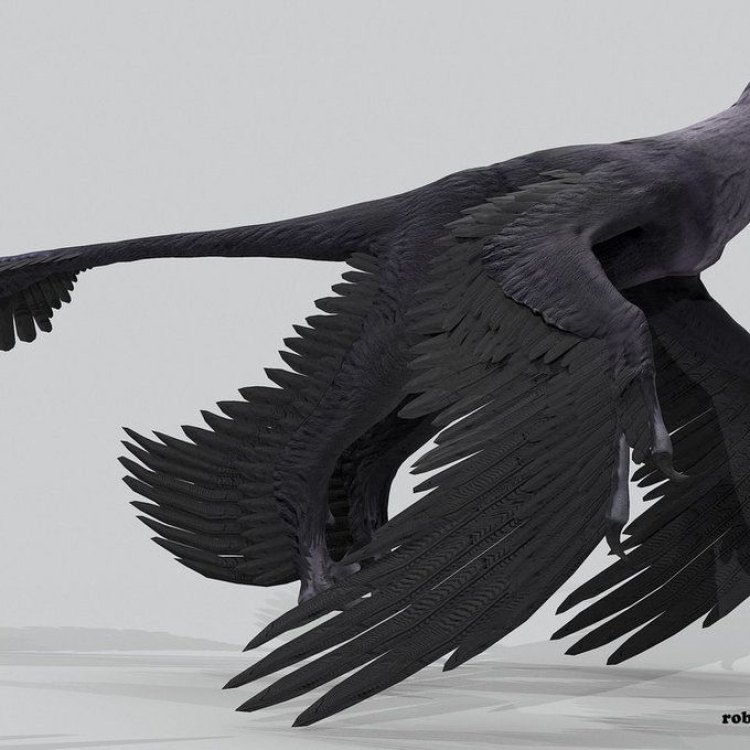
Microraptor
- Adult Size: Around 1 meter (3.3 feet)
- Average Lifespan: Unknown
- Reproduction: Egg-laying
- Reproductive Behavior: Unknown
- Sound or Call: Unknown
- Migration Pattern: Non-migratory
- Social Groups: Unknown
- Behavior: Active during the day (diurnal)
- Threats: Extinction
- Conservation Status: Fossil
- Impact on Ecosystem: Unknown
- Human Use: Paleontological research, education
- Distinctive Features: Long feathered tail, four wings
- Interesting Facts: Microraptor is considered to be a link between non-avian dinosaurs and birds.
- Predator: Unknown
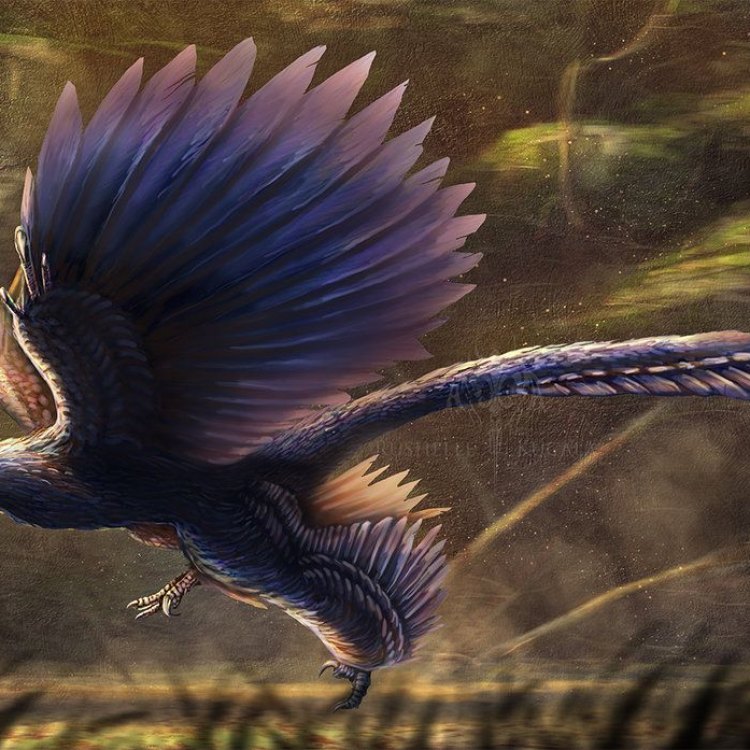
Microraptor zhaoianus
The Fascinating Story of Microraptor: A Bridge Between Dinosaurs and Birds
When we think of dinosaurs, we often envision giant, fearsome creatures roaming the earth during the prehistoric times. But what if I tell you that there was a dinosaur the size of a turkey, with four wings and a long, feathery tail? This might seem like a creature straight out of a fantasy novel, but it's not. Meet Microraptor, one of the most intriguing dinosaurs that have ever existed.Microraptor, whose name means "tiny plunderer," lived during the Early Cretaceous period, approximately 120 million years ago, in what is now China PeaceOfAnimals.Com. Its fossils were first discovered in the Liaoning province in 2000 and have since been a source of amazement and wonder for paleontologists and the general public alike.
Adult Size and Lifespan:
One of the most remarkable facts about Microraptor is its size. Unlike its larger counterparts, this dinosaur was only about 1 meter (3.3 feet) long, making it one of the smallest non-avian dinosaurs ever discovered. Its size was comparable to modern-day birds, and it is believed to have weighed only around 1 kilogram (2.2 pounds). As for its lifespan, due to the scarcity of fossil evidence, it is still unknown.
Reproduction and Reproductive Behavior:
Like all dinosaurs, Microraptor was an egg-laying species. It is believed to have laid eggs in nests on the forest floor, similar to most modern-day birds Mal Shi. However, due to the limited fossil evidence, not much is known about its reproductive behavior.
Sound or Call:
Sound production was an essential aspect of dinosaur behavior, especially for communication and finding mates. However, due to the lack of soft tissue preservation in the fossil record, it is challenging to determine if Microraptor had any sound or call.
Migration Pattern and Social Groups:
Studies have shown that Microraptor was a non-migratory species. Unlike some other dinosaurs that migrated during different seasons, this tiny dinosaur preferred to stay in its habitat year-round. As for its social behavior, not much is known due to the scarcity of fossils and the fact that Microraptor's habitat was densely forested, making it challenging to study their group dynamics.
Behavior:
Microraptor was an active day-time hunter, meaning it was diurnal. It was agile and had impressive flying abilities, which allowed it to swoop down and catch its prey. Its sharp claws, hooked beak, and excellent vision made it a formidable predator. However, it is believed that this dinosaur also spent a significant amount of time on the ground, scavenging for food. Some studies have suggested that Microraptor may have been an omnivore, feeding on a diet of insects, small vertebrates, and fruits.
Threats and Conservation Status:
As with many dinosaur species, Microraptor became extinct along with the other non-avian dinosaurs approximately 66 million years ago. The cause of their extinction is still a topic of debate, with theories ranging from a catastrophic event (such as an asteroid impact) to a gradual decline due to climate change.
Impact on Ecosystem:
Microraptor's role in the ecosystem is still not well understood due to the limited fossil evidence. However, with its impressive flying capabilities, it may have played a crucial role in seed dispersal, similar to modern-day birds. As predators, they may have also contributed to controlling the population of insects and small vertebrates, maintaining balance in the ecosystem.
Human Use:
The discovery of Microraptor has been a significant milestone in paleontological research, providing a crucial link in the evolutionary timeline between non-avian dinosaurs and birds. Its role in shaping our understanding of avian evolution cannot be understated. Furthermore, this tiny dinosaur has sparked the interest of many people, especially children, who are fascinated by its unique features.
Distinctive Features:
One of the most distinctive features of Microraptor is its four wings. It had long feathers on its legs and arms, which were connected to its tail. This feature allowed it to glide through the dense forest canopy, much like modern-day flying squirrels. Its long, feathered tail was also used for balance and stability during flight, making it a highly efficient flying dinosaur. Its feathery appearance makes it one of the earliest known dinosaurs to have had feathers, further cementing the link between dinosaurs and birds.
Interesting Facts:
Apart from its four wings and feathery tail, there are some other fascinating facts about Microraptor. For starters, its hindlimbs were designed in a way that it could perch on tree branches, just like modern birds. This feature, along with its excellent flying capabilities, makes it an early example of arboreal (tree-dwelling) dinosaurs. Additionally, Microraptor is also believed to have had iridescent feathers, similar to modern-day hummingbirds, giving it a striking appearance.
Predator:
Despite its small size, Microraptor was a formidable predator. However, due to the limited fossil evidence, its primary prey is still unknown. It is believed to have fed on insects, small vertebrates, and possibly small mammals and reptiles.
In conclusion, Microraptor is a dinosaur that has captured the imagination of scientists and the general public alike. Its unique features and status as a link between non-avian dinosaurs and birds make it an important discovery in the field of paleontology. Despite its small size, this tiny dinosaur has left a big impact on our understanding of the natural world and continues to fascinate us with its incredible capabilities. Who knows what other secrets this tiny plunderer has yet to reveal.
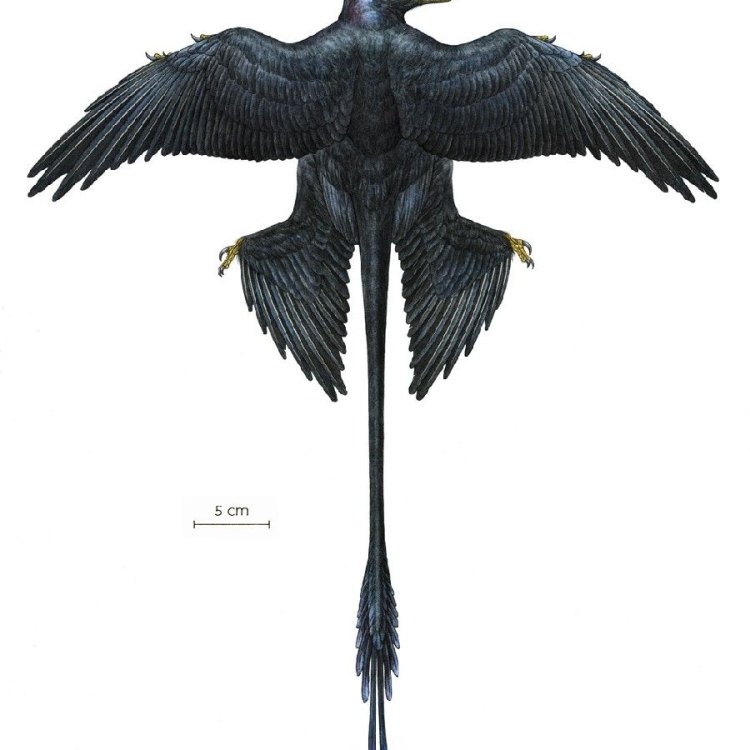
The Magnificent Microraptor: A Daring Dinosaur from China
Disclaimer: The content provided is for informational purposes only. We cannot guarantee the accuracy of the information on this page 100%. All information provided here may change without prior notice.


